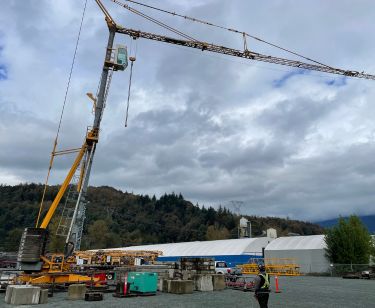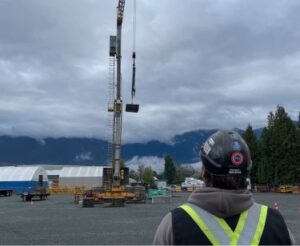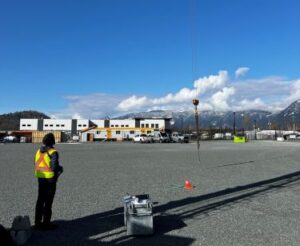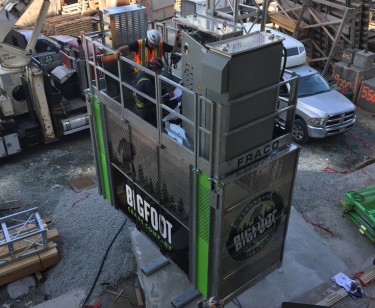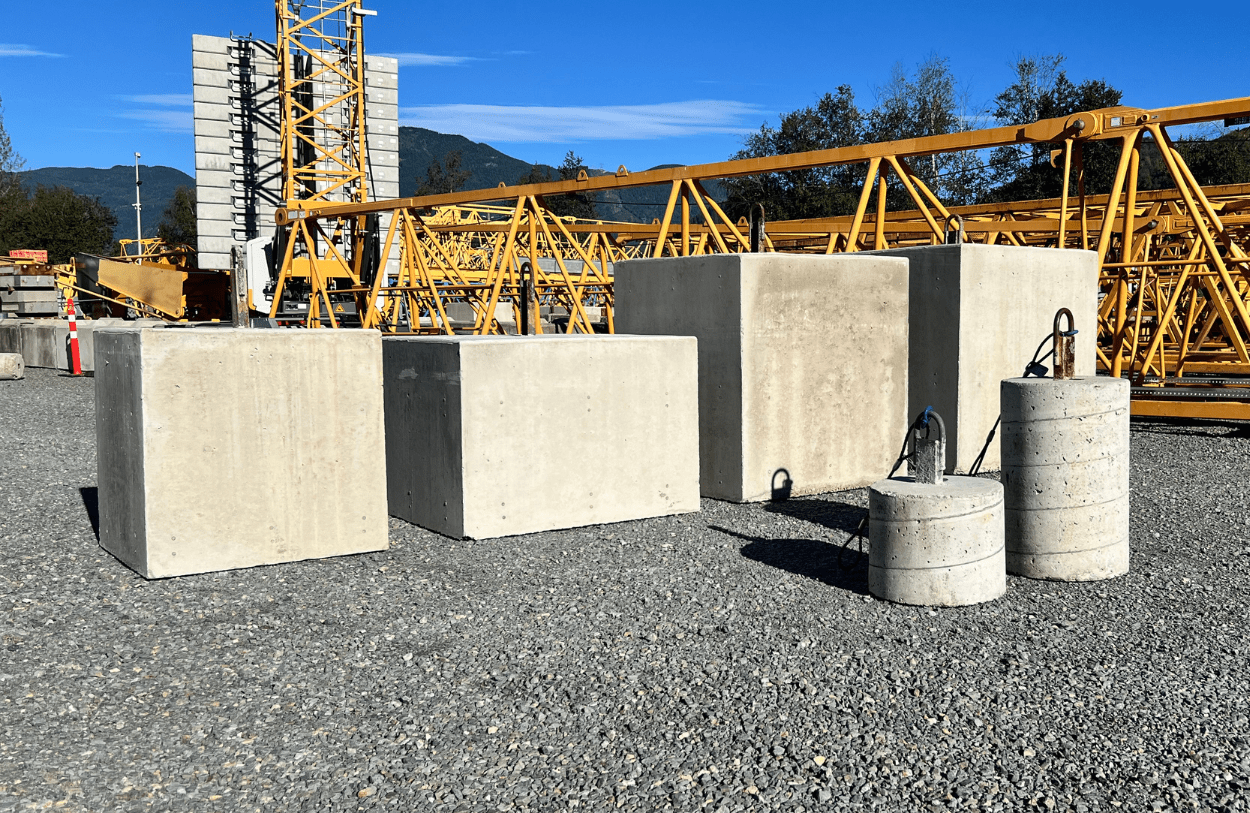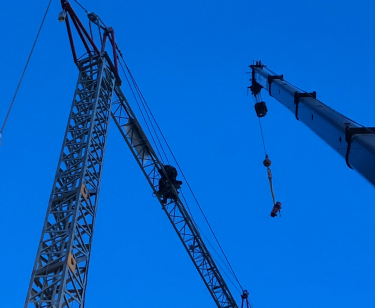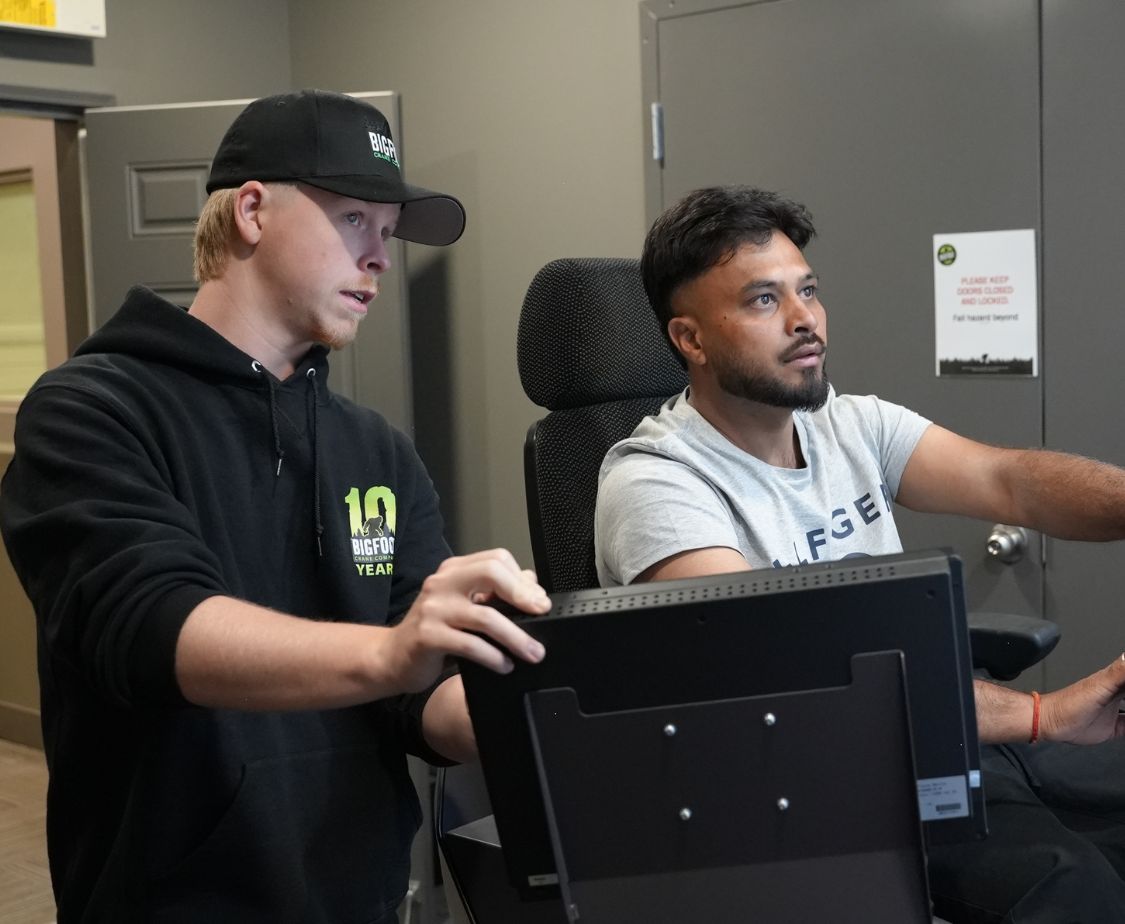Operating a crane takes skill, focus, and a strong understanding of safety. Heavy loads must be moved with precision, and a single mistake can put lives at risk. Proper training prepares operators to handle equipment safely while keeping worksites productive. Construction projects depend on trained professionals who can manage lifts with confidence and accuracy.
Self erect cranes are changing how materials are handled on job sites. These machines offer flexibility and efficiency, making them a popular choice for builders. Demand for skilled operators is growing as more companies rely on this equipment. Workers who complete specialized training stand out in the industry and gain access to better opportunities. Employers value those who understand machine mechanics, follow safety regulations, and prevent costly mistakes.
Training sharpens problem solving skills and builds confidence in high pressure environments. Moving a load is not just about operating controls. Understanding weight distribution, site conditions, and safety procedures makes a major difference. Well trained operators help projects stay on schedule while reducing risks. Investing in proper education leads to a safer workplace and a stronger career.
What is Crane Operator Training?
Training programs teach operators how to lift, move, and place loads safely. Mistakes can lead to serious accidents, making proper instruction necessary for both safety and efficiency. Training provides the knowledge and hands-on experience needed to work with confidence on a job site.
A well structured program covers key areas that prepare operators for real world challenges. Lessons include equipment inspections, load calculations, safety regulations, and emergency procedures. Understanding weight distribution, wind conditions, and ground stability helps prevent accidents. Programs also focus on communication skills, since crane operators work closely with signal persons and ground crews.
Classroom instruction provides the foundation. Operators learn the science behind lifting, machine mechanics, and industry regulations. Lessons explain how different cranes function and what hazards to watch for. Hands on training brings everything to life. Under supervision, trainees practice operating controls, managing loads, and responding to unexpected situations. Both approaches work together to build a well rounded skill set.
What Are the Skills of a Crane Operator?
Lifting and positioning heavy loads takes more than moving levers and pressing buttons. A crane operator needs a strong mix of technical knowledge, problem-solving skills, and physical endurance to handle demanding job sites safely and efficiently.
Technical Skills
Understanding how to control heavy machinery forms the foundation of this profession. Operators must know how to maneuver cranes smoothly, manage swinging loads, and adjust positioning with precision. Load calculations play a big role in safe operations. Judging weight distribution, balance, and load limits prevents accidents and equipment strain. Knowledge of safety regulations helps operators avoid hazards, protect coworkers, and follow industry guidelines.
Soft Skills
Success on the job depends on more than technical ability. Communication keeps operations running smoothly. Crane operators work closely with ground crews, signal persons, and supervisors. Clear instructions prevent miscalculations and workplace accidents. Problem solving skills help operators handle unexpected challenges. Wind changes, unstable ground, or shifting loads can create difficult situations. Quick thinking and calm decision making help keep everything under control.
Physical and Mental Requirements
The physical and mental demands of this work should not be overlooked. Sitting for long periods while maintaining sharp focus requires endurance. Hand eye coordination must be strong to operate controls with accuracy. Operating cranes at extreme heights or in high pressure environments calls for steady nerves. Staying alert and reacting quickly helps prevent mistakes that could put workers and equipment at risk.
A well-trained operator brings a balance of knowledge, skill, and awareness to the job. The right mix of abilities leads to safer worksites, smoother operations, and better overall efficiency.
What Training is Required to Operate a Self-Erect Crane?
Self-erect cranes offer a practical lifting solution for construction projects, but handling them requires proper training. Operators must meet certification requirements, gain hands-on experience, and complete a structured learning process before stepping onto a job site.
Regulatory Requirements and Certifications
Different regions have specific rules for crane operation. In the United States, the Occupational Safety and Health Administration (OSHA) sets the guidelines for operator certification. Most operators must pass exams from the National Commission for the Certification of Crane Operators (NCCCO) or another recognized organization. Canada follows similar regulations, requiring training that meets provincial and national standards.
Certification ensures that operators understand safety procedures, load management, and machine controls. Written exams test knowledge of regulations, crane operation principles, and hazard awareness. A practical assessment evaluates an operator’s ability to maneuver a crane safely and efficiently.
Step-by-Step Process of Becoming a Certified Crane Operator
Operating a self-erect crane requires knowledge, skill, and certification. The process follows a structured path, helping operators gain the confidence and ability to handle equipment safely and efficiently. Each step plays a role in building a strong foundation for a successful career.
Meet Eligibility Requirements
A certified crane operator must be at least 18 years old. A medical exam confirms the ability to manage the physical demands of the job. Good vision, strong depth perception, and steady hand-eye coordination are necessary for safe operation. Employers also look for candidates with a solid understanding of workplace safety.
Complete a Training Course
A formal training program combines classroom instruction with hands-on practice. Operators learn about crane components, equipment setup, and proper load handling. Lessons also cover safety procedures, signaling methods, and how to troubleshoot common issues. Practical training helps students develop precise control, ensuring they can operate a crane in real job-site conditions.
Pass the Written Examination
The written test checks an operator’s knowledge of crane controls, load charts, and industry regulations. Multiple-choice questions focus on safety procedures, signaling techniques, and proper machine operation. Understanding these concepts is key to preventing accidents and maintaining a safe work environment.
Demonstrate Practical Skills
A certified examiner evaluates an operator’s ability to control a self-erect crane. The practical test includes lifting, rotating, and lowering loads with accuracy. Examiners assess smooth operation, correct signaling, and safe load handling. Operators must show confidence in maneuvering the crane under different conditions.
Obtain Certification
After passing both tests, operators receive an official certification. This credential is valid for a set period and proves that an individual has met industry standards. When the certification nears expiration, a refresher course and an updated exam may be required for renewal.
Start a Career in Crane Operation
A certified crane operator can pursue opportunities in construction, manufacturing, and logistics. Companies look for trained professionals who understand safety protocols and efficient crane operation. Strong technical skills and hands-on experience make a difference when securing jobs in this field.
Becoming a crane operator takes commitment, but the rewards include job stability, career growth, and the ability to work on major projects. Training provides the tools needed to operate heavy machinery with confidence.
Why is Crane Training Important?
Operating a crane requires skill, precision, and a deep understanding of safety measures. Proper training ensures that operators handle equipment correctly, follow industry regulations, and contribute to efficient job site operations.
Workplace Safety
A well-trained crane operator knows how to assess risks before lifting heavy materials. Understanding weight limits, balance points, and environmental factors prevents accidents that could lead to injuries or damage. Training also covers emergency procedures, helping operators respond quickly to unexpected situations.
A safe work environment leads to better efficiency. Fewer accidents mean fewer delays. Workers can focus on their tasks without worrying about unstable loads or improper crane usage. Crews that follow safety protocols complete projects faster and with greater accuracy.
Compliance with Industry Regulations and Legal Requirements
Every country has strict rules for crane operation. Training programs teach operators about these regulations, ensuring that they meet legal standards. In the United States, OSHA sets the requirements, while Canada has its own provincial guidelines. Employers must comply with these rules to avoid fines and legal issues.
Certification programs cover topics such as load limits, signaling procedures, and site inspections. Operators who complete these courses demonstrate that they can handle equipment safely and in compliance with industry standards. Proper training also reduces liability for companies, protecting them from costly lawsuits and penalties.
Career Advancement Opportunities and Increased Job Prospects
A certified crane operator stands out in the job market. Many employers require proof of training before hiring, and those with specialized skills have better career prospects. Some operators choose to gain experience with different types of cranes, opening doors to higher-paying positions.
Training also provides a clear path for career growth. Entry-level operators can advance to supervisory roles or specialize in specific industries such as construction, shipping, or manufacturing. With additional certifications, opportunities expand even further.
The Impact of High-Quality Training on Project Success
Well-trained operators play a direct role in a project’s outcome. Precise movements, proper load handling, and effective teamwork keep operations running smoothly. A mistake in crane operation can cause delays, damage materials, or put workers at risk. Proper training minimizes these risks, allowing projects to stay on schedule and within budget.
A construction site with skilled operators is more productive. Coordinated lifts, efficient load placement, and smooth transitions between tasks create a workflow that benefits the entire team. Contractors, site managers, and business owners all see the value in hiring operators who have completed quality training programs.
Cranes are powerful machines that require responsible handling. The right training provides operators with the skills they need to perform their jobs safely, legally, and efficiently. Whether working on a large commercial project or a smaller residential build, proper education in crane operation makes a significant difference in overall job performance.
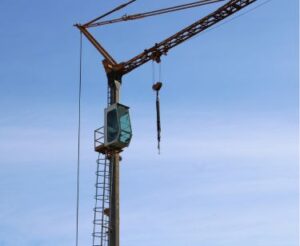
Choosing the Right Crane Training Course
Selecting a crane training program requires careful thought. A well-structured course builds confidence, strengthens safety awareness, and prepares operators for real-world job conditions. The right program should offer a balance of classroom instruction, hands-on practice, and a clear path to certification.
What to Look for in a Crane Training Program
A strong training course should cover both theoretical knowledge and practical skills. Topics such as load calculations, rigging techniques, and workplace safety must be included. Hands-on experience with crane controls, maneuvering, and emergency response is just as important.
Accreditation matters. Courses that meet industry standards help operators qualify for jobs that require formal certification. Programs aligned with national safety regulations provide the necessary credentials to work legally and safely.
Instructors with real-world experience bring valuable insights. A good trainer shares knowledge beyond textbooks, offering practical advice that applies to daily operations. Smaller class sizes allow for better interaction, making it easier for students to ask questions and receive personalized guidance.
A training program should also include a structured evaluation process. Written tests, skill assessments, and supervised crane operation ensure that each student is prepared before entering the workforce.
How Bigfoot Crane Company’s Courses Stand Out
At Bigfoot Crane Company we offer a comprehensive approach to crane training. Our courses focus on both technical skills and real-world applications. Students receive hands-on experience using industry-standard equipment, helping them develop confidence before stepping onto a job site.
Experienced instructors lead the courses, ensuring students gain practical knowledge from professionals who have worked in the field. The training environment is designed to simulate real job conditions, giving students the chance to practice under safe but challenging scenarios.
Our programs also emphasize compliance with industry regulations. Training meets national safety standards, helping graduates secure certification that is recognized by employers. Our structured learning approach ensures that each student receives the knowledge and hands-on training needed to operate cranes safely and efficiently.
The Bigfoot Academy Advantage
Training with us means learning from professionals who understand the industry inside and out. Every course is designed to build confidence, sharpen skills, and prepare operators for real job conditions. With a focus on hands-on learning and ongoing support, we help students gain the knowledge needed to work safely and efficiently.
Expert Instructors with Real-World Experience
A great instructor makes all the difference. Our trainers have worked in the industry for years, handling cranes in construction, heavy lifting, and industrial settings. They bring practical knowledge that goes beyond textbooks, sharing lessons learned from real job sites.
Our training sessions cover both technical skills and problem-solving. We teach operators how to handle unexpected challenges, read load charts with accuracy, and operate cranes under different conditions. Small class sizes create a more personal learning environment, making it easier for students to ask questions and get direct feedback.
Hands-on training with State-of-the-Art Equipment
Reading about crane operation is one thing. Getting into the seat and practicing with real equipment is where the learning happens. We provide students with access to modern cranes, giving them the chance to apply what they’ve learned in a safe training environment.
Our hands-on approach strengthens skills by allowing operators to practice maneuvering, lifting, and working with different load types. Training sessions simulate real job conditions, helping students develop the confidence to handle cranes on active worksites.
Flexible Training Schedules to Meet Industry Demands
Work schedules can be unpredictable, and finding time for training isn’t always easy. That’s why we offer flexible courses designed to fit around busy work commitments. Evening and weekend classes help students balance learning with their current job responsibilities.
For companies looking to train multiple operators, we provide customized training programs. Sessions can be arranged at company worksites or at our training centers, making it convenient to get employees certified without disrupting workflow.
Ongoing Support and Certification Assistance
Training doesn’t stop when the course ends. We provide ongoing support to help graduates stay on top of industry requirements. Our certification assistance ensures that operators complete the necessary exams and meet qualification standards.
Graduates also have access to refresher courses and advanced training. Whether they need to renew certifications or expand their skills, we make it easy to continue growing in the industry. Employers recognize the value of well-trained operators, and having certification from a respected training provider makes a strong impression.
A solid foundation in crane operation leads to safer worksites, better job opportunities, and long-term success. Our training programs give operators the skills and confidence to succeed.
Advancing Your Skills as a Crane Operator
Learning the basics is just the start. Expanding skills through training and hands-on experience can open new opportunities and lead to greater efficiency on the job. Many operators build their expertise over time by working with different types of cranes, refining precision, and keeping up with industry updates.
Gaining Experience Through On-the-Job Training
Spending time in real-world job sites builds confidence and skill. Working under seasoned operators allows new crane handlers to learn advanced load control techniques and problem-solving strategies that textbooks can’t fully cover. Each job presents unique challenges, from lifting irregular loads to maneuvering in tight spaces, which help develop quick thinking and adaptability. Many employers offer mentorship programs where newer operators can refine their techniques under professional guidance.
Pursuing Advanced Certifications
Earning a basic certification is a great first step, but continuing education can help operators stand out. Additional certifications allow operators to work on larger projects or operate cranes in highly regulated industries. Some certifications focus on rigging and signal communication, while others cover complex lifting scenarios like working in high-risk environments. Higher-level training programs provide deeper knowledge of crane mechanics, load dynamics, and emergency response techniques.
Keeping Up with Safety Regulations and Industry Best Practices
Worksite conditions, safety standards, and technology change over time. Operators who stay informed about new regulations and best practices create safer environments for themselves and those around them. Attending industry workshops, reading safety updates, and participating in refresher courses help reinforce safe operating habits. Many companies require periodic safety training to keep certifications valid, ensuring that operators remain up to date on proper procedures.
Developing skills as a crane operator doesn’t stop after earning certification. Gaining hands-on experience, expanding knowledge across crane types, seeking advanced training, and staying informed about safety updates all contribute to long-term success.
Common Challenges in Self-Erect Crane Operation and How to Overcome Them
Every crane operator faces challenges that test skill, patience, and decision-making. Weather conditions, mechanical problems, and communication breakdowns can turn routine lifts into difficult tasks. Learning how to handle these challenges reduces risks and keeps operations running smoothly.
Managing Load Balance and Preventing Tipping Hazards
A crane’s stability depends on proper load distribution. Uneven weight shifts can cause tipping, which puts equipment and crew members at risk. Before lifting, operators should confirm that loads are properly secured and within the crane’s capacity. Swinging too quickly or extending the boom too far can also shift the crane’s center of gravity, increasing the chances of instability. Paying attention to the ground surface matters just as much. Soft or sloped terrain requires extra precautions, such as using outrigger pads or cribbing to create a level foundation.
Operating in Extreme Weather Conditions
High winds, heavy rain, and freezing temperatures can create dangerous working conditions. Wind gusts can cause suspended loads to sway unpredictably, while rain and ice make surfaces slippery. Checking weather forecasts before a shift allows operators to plan accordingly. If winds exceed safe limits, postponing the lift is the best option. When working in cold weather, hydraulic systems may take longer to respond, and metal components can become brittle. Warming up equipment before use and applying the right lubricants help prevent mechanical strain.
Communicating Effectively with Ground Crews
Clear communication between the operator and ground crew prevents accidents. Signalers rely on hand gestures or radios to guide lifts, but distractions or unclear signals can lead to mistakes. Discussing plans before starting a job ensures that everyone understands their role. Using standard hand signals and confirming radio messages before executing movements makes operations smoother. If visibility is poor or multiple cranes are in use, assigning a dedicated signal person helps avoid confusion.
Handling Mechanical Issues and Knowing When to Perform Maintenance Checks
Cranes operate under high stress, and parts wear down over time. Hydraulic leaks, worn cables, and sensor malfunctions can lead to failures if ignored. Daily inspections help catch minor issues before they turn into major repairs. Checking for leaks, unusual noises, and slow response times can reveal potential problems. Scheduled maintenance, like lubricating moving parts and testing brakes, extends the life of the equipment. When an issue arises during operation, shutting down and troubleshooting immediately is always safer than taking risks.
Take the Next Step in Your Crane Operator Career
A strong foundation in crane operation opens doors to better job opportunities and a safer work environment. Investing in professional training builds confidence, improves skills, and prepares operators for real job-site challenges. At Bigfoot Academy we make enrolling simple. Course schedules are flexible, and training programs are designed to fit different skill levels. New students can start with the fundamentals, while experienced operators can refine techniques or complete certification renewals. Call or email us today and take the next step toward a successful career in crane operation.
